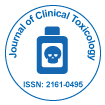
Journal of Clinical Toxicology
Open Access
ISSN: 2161-0495
+44 1478 350008

ISSN: 2161-0495
+44 1478 350008
Gerd Bode
University of Gottingen, Germany
Scientific Tracks Abstracts: J Clin Toxicol
Gratitude is within the ethical tradition of Japanese towards experimental animals, because these provide valuable data for efficacy and safety of pharmaceutical compounds before first administration to humans. Researchers must therefore develop strict responsibilities to use these models under strict adherence to the 3Rs (Refine, Reduce, Replace). Models should be relevant; and a relevant model is an animal which expresses receptors/epitopes like humans, reveals comparable pharmacodynamic effects and resembles humans in regard to kinetic parameters like metabolism, exposure levels, protein binding and bioavailability. For primary or secondary pharmacodynamics, next to traditional species, also transgenic or disease models are being used, but for non-clinical safety studies predominantly traditional rodents or non-rodents are tested. The undesirable adverse reactions are often so subtle, that for optimal assessments excellent knowledge of specific or spontaneous reactions is needed. The model must easily be available, costs acceptable and no paucity of historical data representing an obstacle. There will be a continuation of using rats and mice for toxicity evaluations, but for non-rodents a growing refusal is felt in using dogs and monkeys. This paper deals with the utility of the minipigs as an animal model in regulatory toxicology. The advantages or disadvantages will be illustrated. The Gottingen minipig is a genetically managed model unlike the dog and monkey toxicology models. The basis of the small size of the Gottingen minipig does not involve defective genes. Commercial interests in the pig as an agricultural production species have driven the area of pig genomics. There is no equivalent economic driver for progress in the dog or the non-human primate. The Gottingen minipig is well positioned for the performance of toxicogenomics studies. The close sequence homology between pigs and humans suggest that minipigs could be useful for the testing small molecules but also for biotechnology products. The minipig is the only non-rodent model where transgenic animals can be readily generated, and reproductive technologies are well developed in the pig. The biology of the minipig is comparable; practically all study types can be performed in the minipig. For reproductive toxicology studies the minipig offers numerous advantages although the lack of placental transfer of macromolecules may limit the role of the minipig in reproductive testing of biotechnology products. For safety pharmacology studies the minipig is an advantageous model, particularly as regards the cardiovascular system. The immune system of the pig is better characterized than that of the dog and as an omnivore the GI-tract reveals similar characteristics. Overall, the mini-pig should be carefully considered as an alternative to dogs and monkeys; but of course, more comparative data is needed for a rigorous assessment of the usefulness and the predictivity of this species for human drug-induced desired and adverse reactions.
Email: gerd-bode@t-online.de